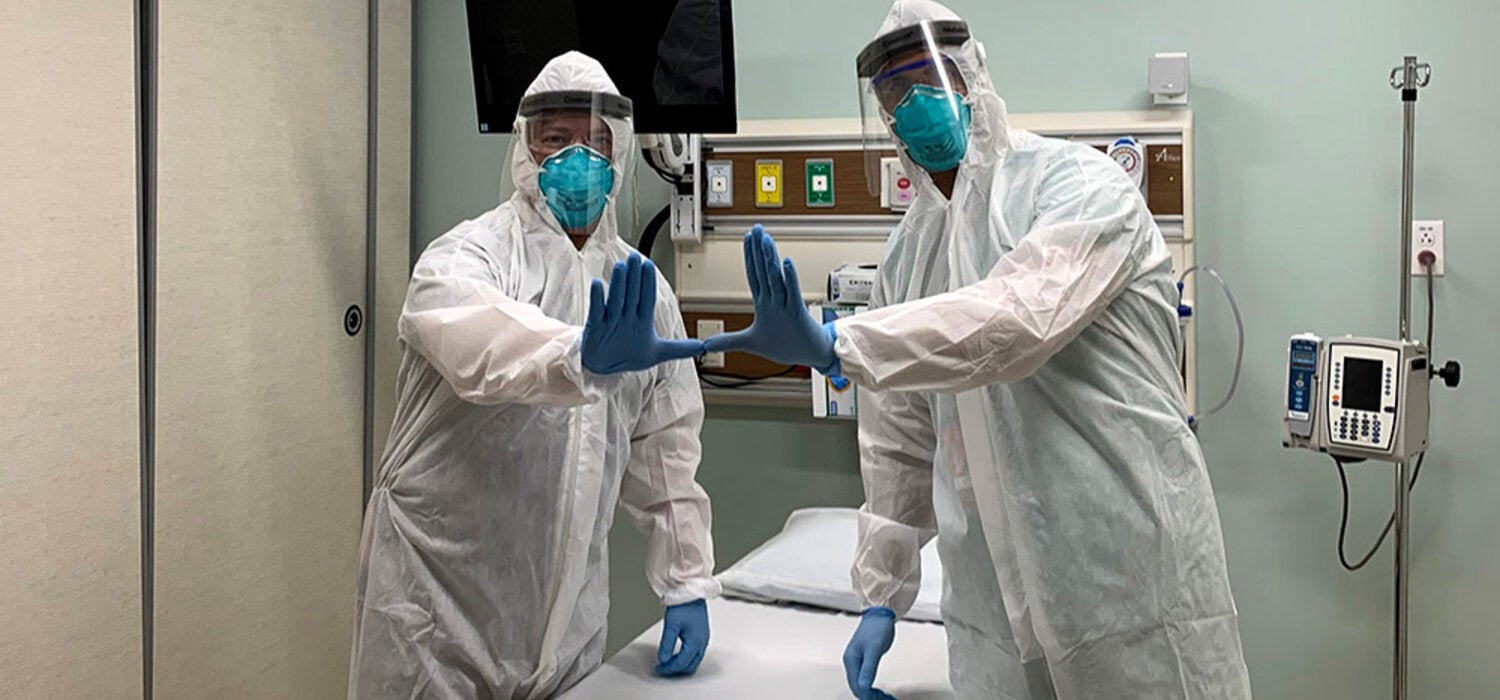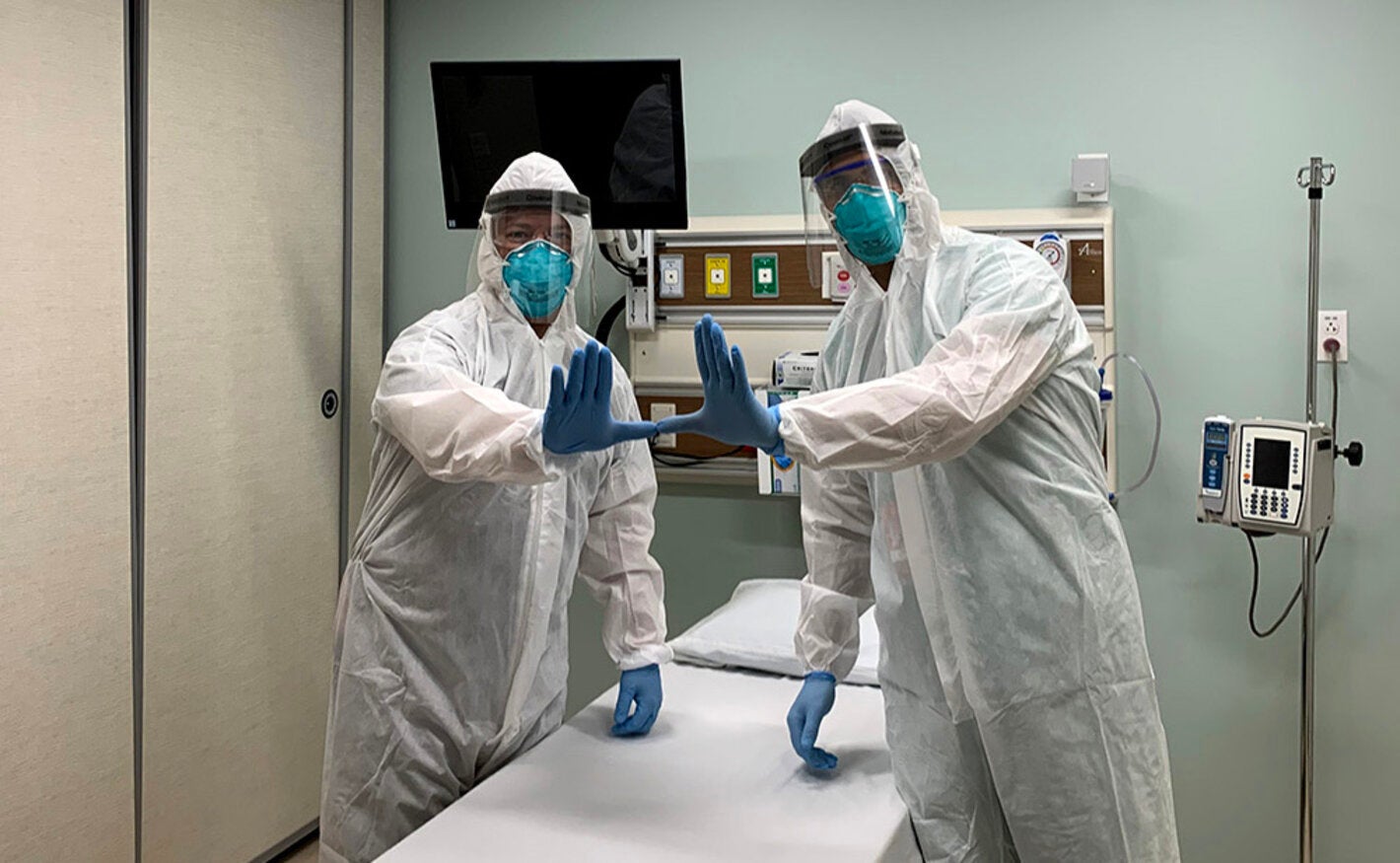by Johis Ortega and Juan M. González*
Miami, Florida, USA, 2 April 2020. In the Miami metropolitan area, a large number of residents are immigrants from countries throughout Latin America and the Caribbean. Moreover, the city receives many tourists and business travelers from those regions every year.
Our students at the University of Miami School of Nursing and Health Studies do their residencies in the emergency rooms of local community hospitals, under the supervision of their professors, providing care to patients of all ages, genders, races, and nationalities. A typical night shift involves dealing with patients with heart attacks, apoplexy, diabetes, infections, and injuries, among others.
In early March 2020, this routine changed overnight, due to the sudden outbreak of the novel coronavirus (COVID-19).
Since then, we have seen exponential growth in the daily number of patients presenting at our emergency room with COVID-19 symptoms. To control the spread of the disease, the hospital has established a strict monitoring system. Patients arriving at the emergency room must wait in an entry area, where they are given a brief medical examination. A nurse—wearing the recommended personal protective equipment (PPE) —checks their vital signs and takes their temperature. Patients with severe coronavirus symptoms are brought into the emergency room itself.
Triage, organizing care
Patients with only mild or moderate symptoms are sent to one of the tents the hospital has set up in the parking lot. During this global health crisis, the hospital is offering access and health care to everyone, regardless of whether they have health insurance and regardless of their immigration status.
When patients arrive at the tent, a team of nurses asks about their medical history, takes their temperature, and checks their vital signs again. They are then sent to the next station for a coronavirus test with a nasopharyngeal swab. They are tested for influenza and streptococcal pharyngitis and, if necessary, given a chest X-ray. Finally, these patients are moved on to an area where they are examined by advanced practice nurses like us. Before providing them with health care, we have to take very good care of ourselves first.
We wash our hands. We put on our PPE: gown, head covering, goggles, respirator, face shield, and gloves. We wear PPE during our entire shift. Between patients we disinfect the stethoscopes with alcohol, wash our hands, and change our gloves.
Patients are diagnosed based on their symptoms. Most of them can be sent home. All of them are given instructions on how to manage this atypical disease, following the recommendations of the U.S. Centers for Disease Control and Prevention (CDC).
They are told to self-isolate for 14 days, wear a mask, rest, drink hot liquids, and take paracetamol for fever. They should wait for their test results at home They should return to the hospital only if they have difficulty breathing or their fever does not come down.
When we are working in the emergency room itself, we see the patients with the most severe symptoms, isolated from others to avoid contagion. We observe whether their breathing is too fast or too slow; if they have a cough or difficulty breathing. Before entering the rooms where they are, we put on N95 or N99 respirators, interviewing them from a distance of 6 feet (1.8 meter). Then comes the moment of greatest risk: when we get close enough to examine them. If they present serious signs, they are admitted to hospital.
During each shift, between the tent and the emergency room, we take care of more than 60 patients with COVID-19 symptoms. This disease does not discriminate. Everyone is affected. We know we will have to provide health care for more and more patients, because the experience of other countries has shown that those who are infected begin to worsen within a period of 2 to 3 weeks.
A new disease for health workers too
For almost all health professionals, this is uncharted territory. We knew that the number of people infected with COVID-19 was going to rise—but not that it would happen so quickly. And we are going to continue to see a dramatic increase in the numbers, because many of the patients we send home return a few days later when their symptoms get worse. Those with a pre-existing condition can present with symptoms such as low blood pressure or low levels of oxygenation. If they have pneumonia and difficulty breathing, we intubate them. This is concerning, because we may not have enough ventilators. The situation is also difficult for the patients, who are not allowed to have family members accompany them.
These are highly stressful circumstances for all health professionals and for our patients. We want to provide them with the best possible care, but at the same time we have to protect ourselves to avoid carrying the virus back home to our families, and to avoid becoming ill ourselves. It is especially hard when you see a colleague your own age become sick and need intubation. This is when we remember our own mortality. And we have not seen the worst yet.
It is always necessary to consider health on a global scale. Controlling communicable diseases is complicated, because what happens in one country has an impact on others, through immigration, tourism, and other ways. Therefore, it is important to be prepared for any crisis.
Nine hours, 12 hours go by in the hospital, almost nonstop. At the end of a night shift, we are exhausted. We take off our PPE. We wash ours hands. We leave behind the tents and the patients who keep on coming. They remain in the capable hands of our colleagues; now it is their turn to risk contagion.
Passion, doubts and hope
We return to our homes and our families, always mindful of social distancing. We wonder whether the coronavirus has come in with us, on our clothes or on our skin. When we get into the house, we clean the soles of our shoes with chlorine bleach. We change our clothes. Before we hug our beloved children, we wash our hands again. We can’t remember how many times we have washed them already today. Our skin is dry and cracked.
At night, we are tortured by questions.
How many of the patients we saw today will test positive? How many of them will come back in a few days with an uncontrollable fever or with respiratory failure? How many will wind up intubated? What will become of them? How many more cases will we see tomorrow; in a week; in a month? Will we run out of PPE? How many of our colleagues will be taken down by this invisible and devastating virus?
We look into the eyes of our companions for hope and the strength to carry on. We are encouraged at the thought of being united in a worldwide nursing community, all of us fighting to save lives. Our vocation keeps us going.
But our faith in science encourages us as well. Right now there are scientists— ‒including research nurses—working in their laboratories, dedicated to finding a solution. After reaching the top of the curve, the day will come when we see the number of cases start to go down. The day will come when we get effective drugs. When we get a vaccine.
In the meantime, whenever we talk to patients, we urge them to take the recommendations of health professionals seriously. We get ready to go back into the emergency room. We wash our hands. We put on our N95 respirators, our head coverings, our gowns, our gloves.
We are nurses, and we will continue to face every shift with courage and enthusiasm, with hope and compassion.
Disclaimer
Authors hold sole responsibility for the views expressed in their texts, which may not necessarily reflect the opinion or policy of the Pan American Health Organization. The mention of specific companies or certain manufacturers' products does not imply that they are endorsed or recommended in preference to other ones of a similar nature.
*Johis Ortega and Juan M González are advanced practice nurses and professors at the University of Miami’s School of Nursing and Health Studies. Ortega also serves as Associate Dean for Hemispheric and Global Initiatives at the school and González is Director of the Master’s Program in Family Nursing.




